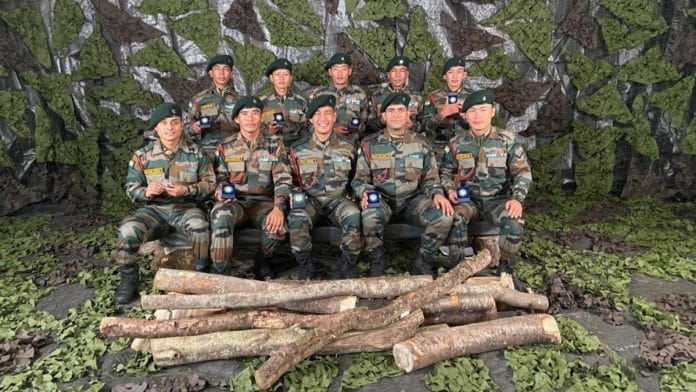As a landlocked country bordered by India on three sides and China on the fourth, Nepal is a key constituent of India’s ‘Neighbourhood First’ policy. After the Chinese occupation of Tibet in the 1950s and the India-China war in 1962, Nepal’s role as a buffer state gained prominence. The country’s geographical location makes it highly dependent on India for trade and security, particularly basic goods and fuel. However, this near-total reliance sometimes casts a shadow over its relationship with India, giving rise to an ‘anti-India’ sentiment that is often exploited by third parties for their vested interests.
As with any two countries that share common borders, India faces several challenges in managing its relationship with Nepal, a country known to be fiercely independent. New Delhi’s approach toward Kathmandu needs to keep this aspect in mind: neither too deep to be seen as interference, nor fully ‘hands-off’. The latter leaves the field open for other players, notably China, to gain undue influence, making a delicate balancing act crucial.
Nepal would like to be left alone to pursue its own independent foreign policy, but that doesn’t mean India has to back off completely. Rather, it should work in concert with Nepal, as per its needs.
India-Nepal military connect
An often-overlooked aspect in the India-Nepal relationship is the strong military-to-military connect, which has not been exploited to its fullest potential.
Nepal and India share a unique tradition – possibly the only kind in the world to arise out of the Gorkha connection. The Chiefs of Army Staff of both countries are honorary Generals in each other’s army. This arrangement allows for greater Track 2 interaction and a free and frank exchange of views, not tied down by diplomatic distinctions.
On 25 February 2025, at the invitation of the Nepalese COAS, six former Chiefs of the Indian Army, including this author, visited Nepal and interacted with their Nepalese counterparts both formally and informally. The stay included visits to the Pashupatinath and Muktinath temples, underscoring the deep religious bonds between the two countries and armies, and generating immense goodwill.
One of the main irritants in the India-Nepal relations is the simmering border dispute over the Kalapani region, which lies at the tri-junction between China, India, and Nepal, close to the Lipulekh Pass. Both countries claim the region as their own, citing historical records and treaties.
The issue came to the fore when India published a new political map in 2019 after the abrogation of Article 370, showing the Kalapani region as part of India. Nepal countered by issuing its own political map in 2020, showing this area as part of Nepal. In 2024, it went a step further and showed the contentious areas of Lipulekh, Limpiyadhura and Kalapani on its Rs 100 currency note.
It may be noted that this issue normally gets raked up during periods of political instability or in the run-up to elections as a means of garnering popular support. The road to the West of the Kalapani River, being constructed by India, will greatly benefit the people living there and improve connectivity for all. On the ground, a modus vivendi exists between people on both sides of the river, who have no animosity toward each other. Building on the ground situation, Track 2 dialogues can help the countries arrive at a mutually acceptable solution that can then be taken up through regular channels.
Another irritant is the issue of Nepalese Gorkhas in the Indian Army. Nepalese domiciled Gorkhas have been a part of the Gorkha Regiments of the Indian Army, and have fought fiercely in all wars that India has waged, earning a number of gallantry awards. Service in the Indian Army guaranteed them a secure job and life-time pension after retirement along with associated benefits.
The Agnipath scheme announced by the Indian government in 2022 came as a setback to these aspirations, with the Nepalese Government deciding not to send their people for recruitment under the new terms and conditions. Notwithstanding, feedback suggests that the youth themselves are not averse to joining the Indian Army, even under the new terms, which are quite generous.
An ‘all or nothing’ policy is not benefitting anyone. Nepali youth should be permitted to join the Indian Army and the genuine concerns of the Nepali side mitigated to the extent possible. This strong link between the two armies, which is the bedrock of sound relations between the two countries, should not be allowed to fade away.
Also read:
The China factor
Just as India is reaching out to Nepal as a neighbouring country, so is China. China’s engagement with Nepal, therefore, cannot be always viewed through the prism of suspicion. China has made considerable inroads in Nepal, particularly in trade and commerce.
The near-monopoly that Indian companies enjoyed is slowly being eroded. For example, Mahindra, a leader in the Nepalese automobile market, is now facing a stiff challenge in the Electric Vehicle segment, for which it does not as yet have a competitive alternative. It is for the Indian companies to rise up to the challenge and come up with new products or new segments in which to trade rather than lament about Chinese influence.
On its part, Nepal is quite clear that it wants good relations with both China and India. While safeguarding its national interest, the country is keenly aware of the importance of its buffer status, and would not like to jeopardise that by leaning toward any one of its giant neighbours. In the long run, geostrategy and economics will work to India’s advantage.
General Manoj Mukund Naravane PVSM AVSM SM VSM is a retired Indian Army General who served as the 28th Chief of the Army Staff. Views are personal.
(Edited by Zoya Batti)






